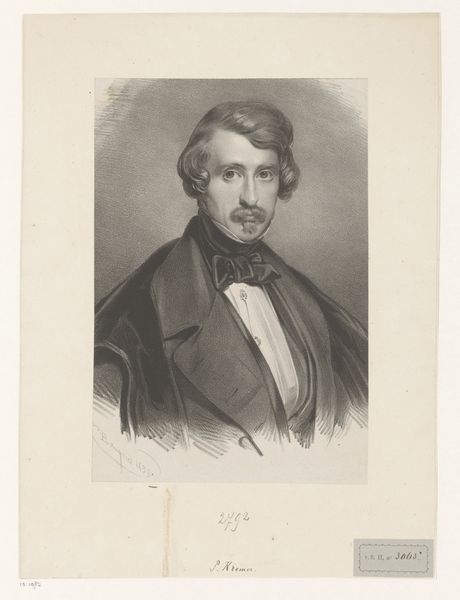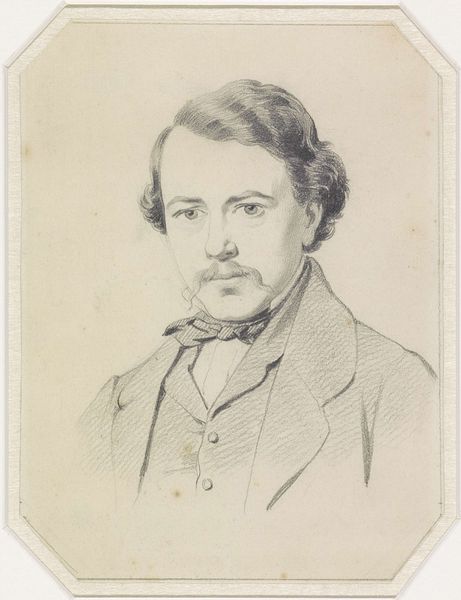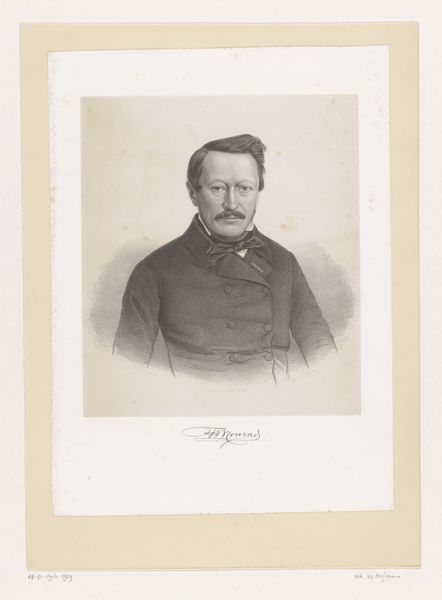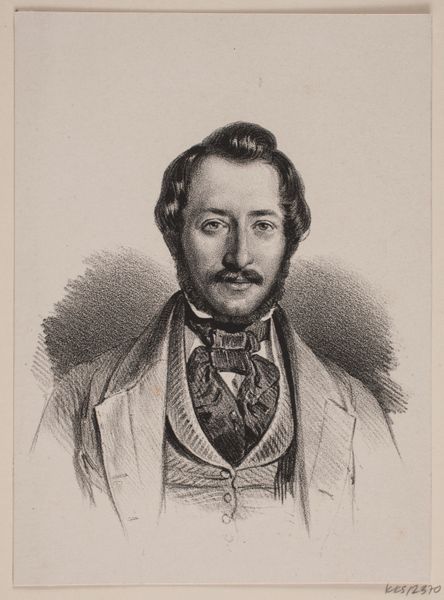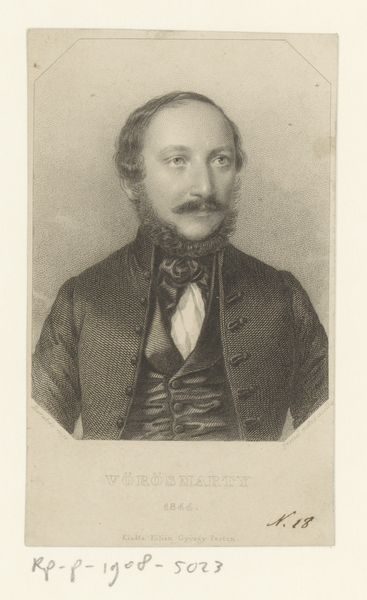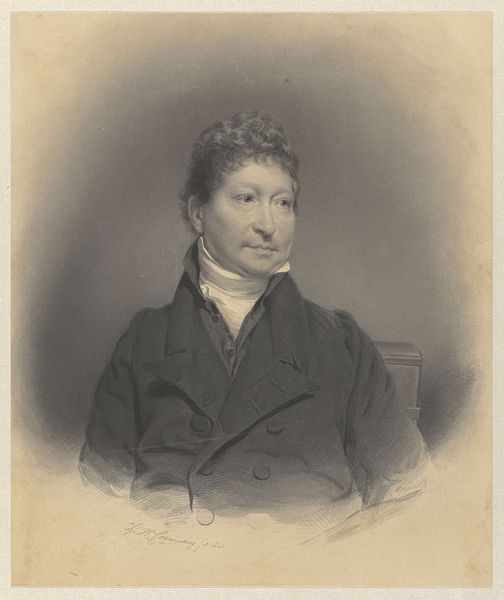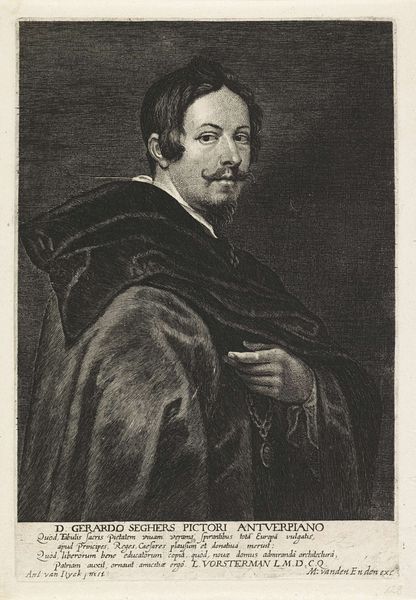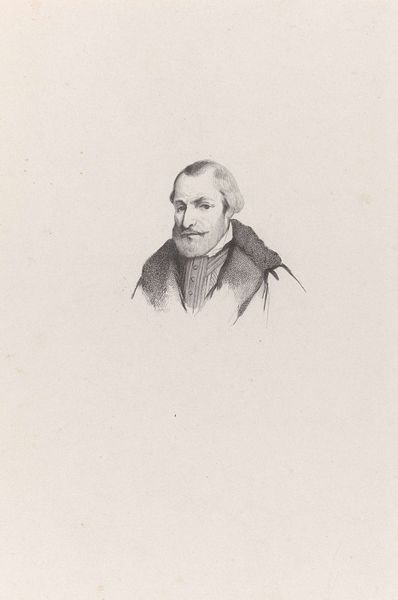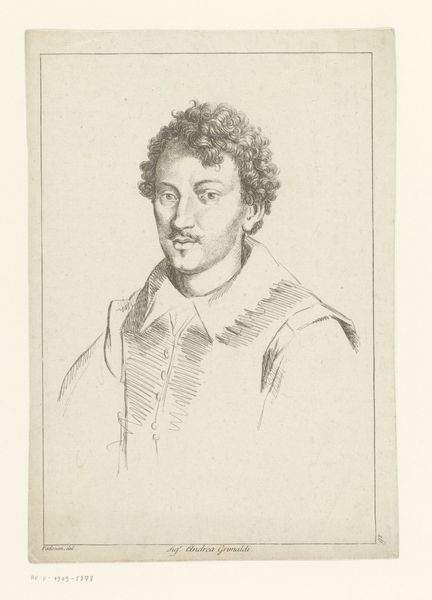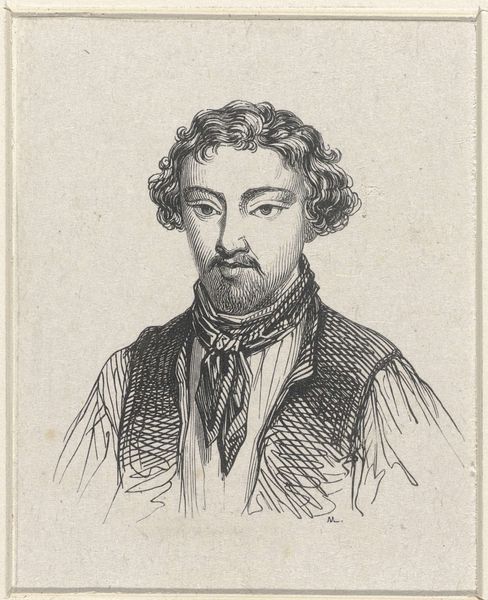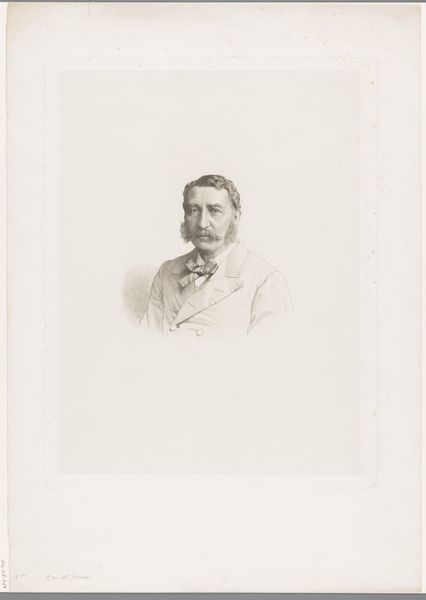
photography
#
portrait
#
portrait image
#
dutch-golden-age
#
photography
#
portrait reference
#
portrait head and shoulder
#
animal drawing portrait
#
portrait drawing
#
genre-painting
#
history-painting
#
facial portrait
#
academic-art
#
portrait art
#
fine art portrait
#
celebrity portrait
#
digital portrait
Dimensions: height 362 mm, width 286 mm
Copyright: Rijks Museum: Open Domain
Editor: This is a portrait of Willem I, Count of Nassau-Dillenburg. The piece is dated somewhere between 1850 and 1930 and is currently held at the Rijksmuseum. It strikes me as quite austere, almost severe in its depiction of the subject. How do you interpret this work, especially considering its potential timeframe? Curator: The severity you observe is compelling. The portrait invokes earlier Dutch Golden Age styles, and considering it was produced later –potentially as late as the 1930s – allows us to consider its symbolic intent. It attempts to recall an ideal through visual language. Observe how his clothing, while appearing dark and simple, still connotes wealth and authority, mirroring the visual vocabulary associated with power and status. Does anything about this recall a specific era for you? Editor: Well, the high collar and the subject's overall demeanor reminds me of the Renaissance and Early Modern portraits that tried to reflect the subject’s noble status, in this case referencing Willem I's significance. What about the artist themselves, choosing to revive an earlier aesthetic, what could this choice convey? Curator: Indeed. And that choice of style suggests a conscious reaching back, a yearning perhaps for a time when identity and leadership were perceived differently. It’s a statement that speaks volumes about cultural memory and the stories a nation tells itself. The choice reinforces an effort to solidify identity. Does the composition suggest this intention further? Editor: Now that you mention it, the framing of the subject is straightforward, almost confrontational. Maybe this deliberate approach emphasizes stability and directness as leadership qualities. Curator: Precisely. So this initially austere image actually is full of intent, not simply capturing likeness, but constructing a symbolic representation. Editor: I didn’t initially consider the historical context and how the artist strategically utilized past visual symbolism, however the symbolic revival you revealed really enriches its interpretation! Curator: Recognizing these visual continuities offers us a deeper engagement with art.
Comments
No comments
Be the first to comment and join the conversation on the ultimate creative platform.

